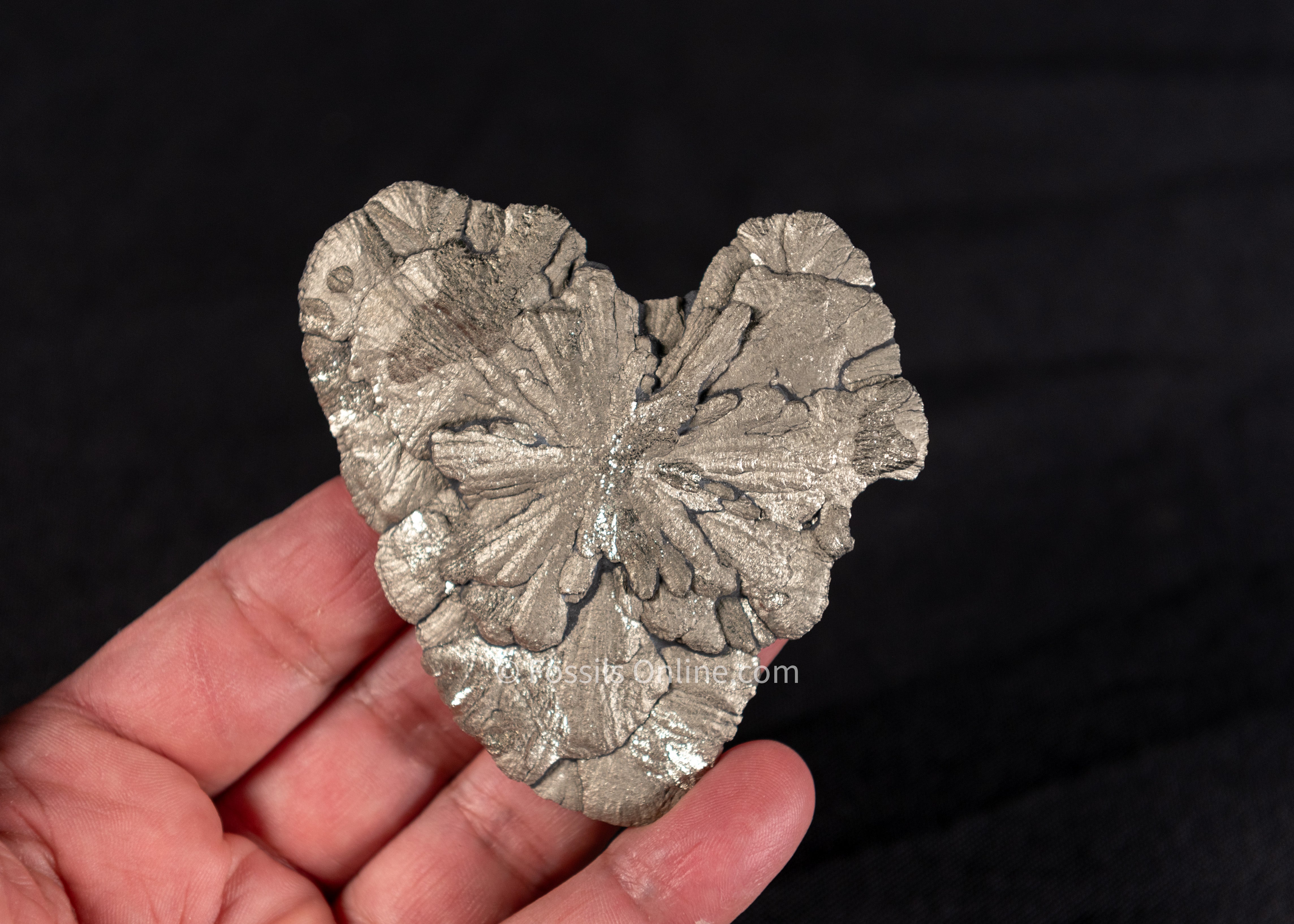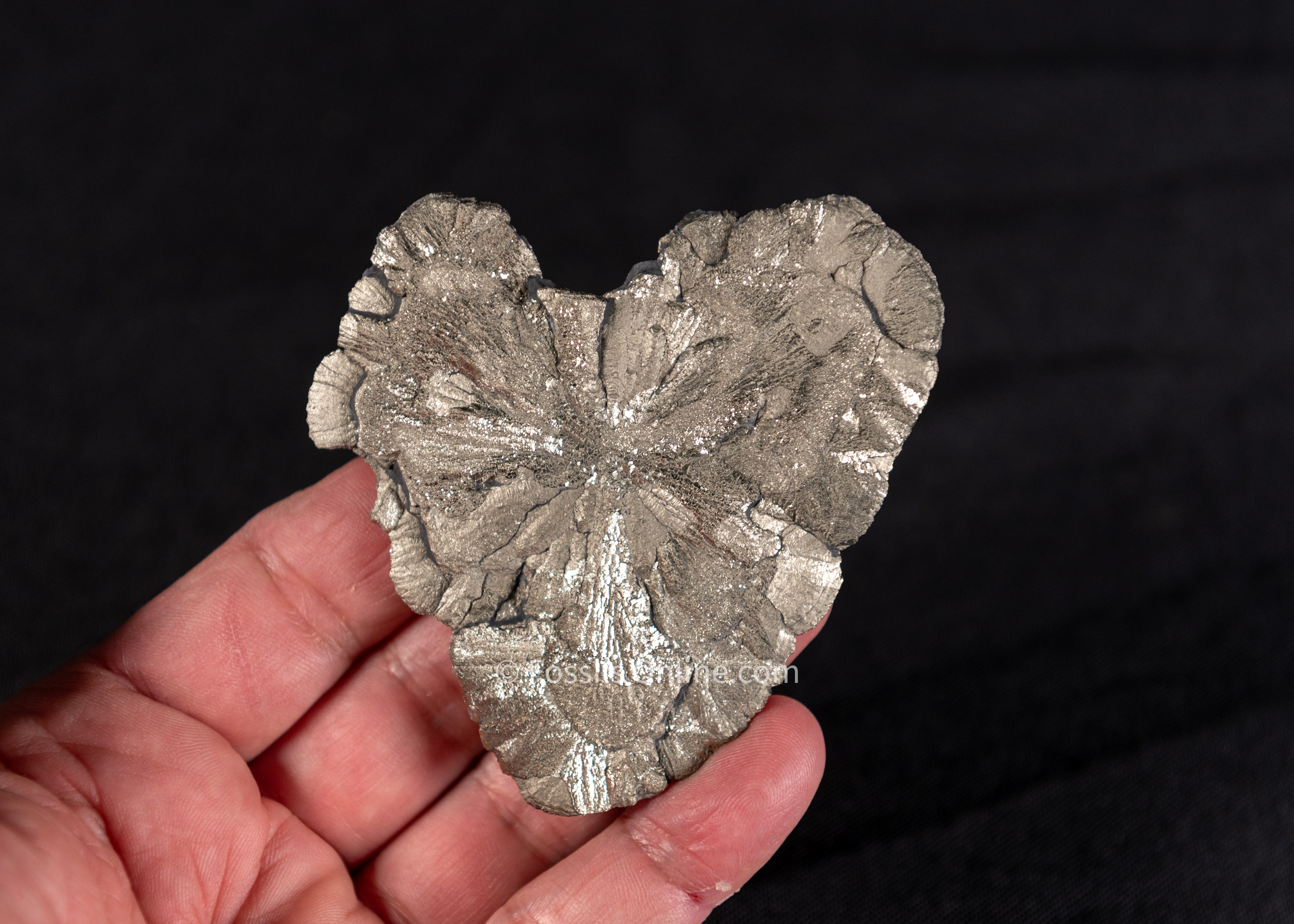

Heart Shaped Pyrite Sun Dollar
Unique heart shaped 'miner's dollar' as they are sometimes called. The coal miners that encounter them during the mining operation would name them this.
Pyrite Suns
Pyrite suns, also known as pyrite dollars, are fascinating and unique mineral formations of the shiny, metallic mineral pyrite (FeS₂), which is also commonly known as fool's gold due to its superficial resemblance to real gold. These formations are particularly associated with Sparta, Illinois, where they have been found in abundance and have a notable local significance.
Formation of Pyrite Suns
Pyrite suns form in a distinctive manner, primarily in the coal mines beneath Sparta, Illinois. These formations are not typical crystals but rather disk-shaped concretions of pyrite. They are found in narrow seams of shale between coal beds. Geological pressure and the unique conditions of the shale and surrounding coal layers contribute to their disk-like shape.
The process begins with the pyrite forming under anaerobic conditions (lacking oxygen) in the presence of organic matter, iron, and sulfur. Over millions of years, the pressure compacts the materials, and the pyrite crystallizes into these thin, disk-like shapes. The radial pattern seen on pyrite suns, which often resembles the rays of the sun, is due to the crystal growth outward from a central nucleus in a flat plane, constrained by the surrounding rock.
Significance of Sparta, Illinois
Sparta, Illinois, is particularly significant when discussing pyrite suns due to the prevalence of these formations in its coal mines. The Sparta area, part of the Illinois Basin, has optimal geological conditions for the formation of pyrite suns, making it one of the few locations in the world where they can be found. Although less common today due to changes in the mining industry, the legacy of pyrite suns continues to add to the local lore and attracts enthusiasts from around the world.
Size
3.2" wide x 3.05" high
Choose options


